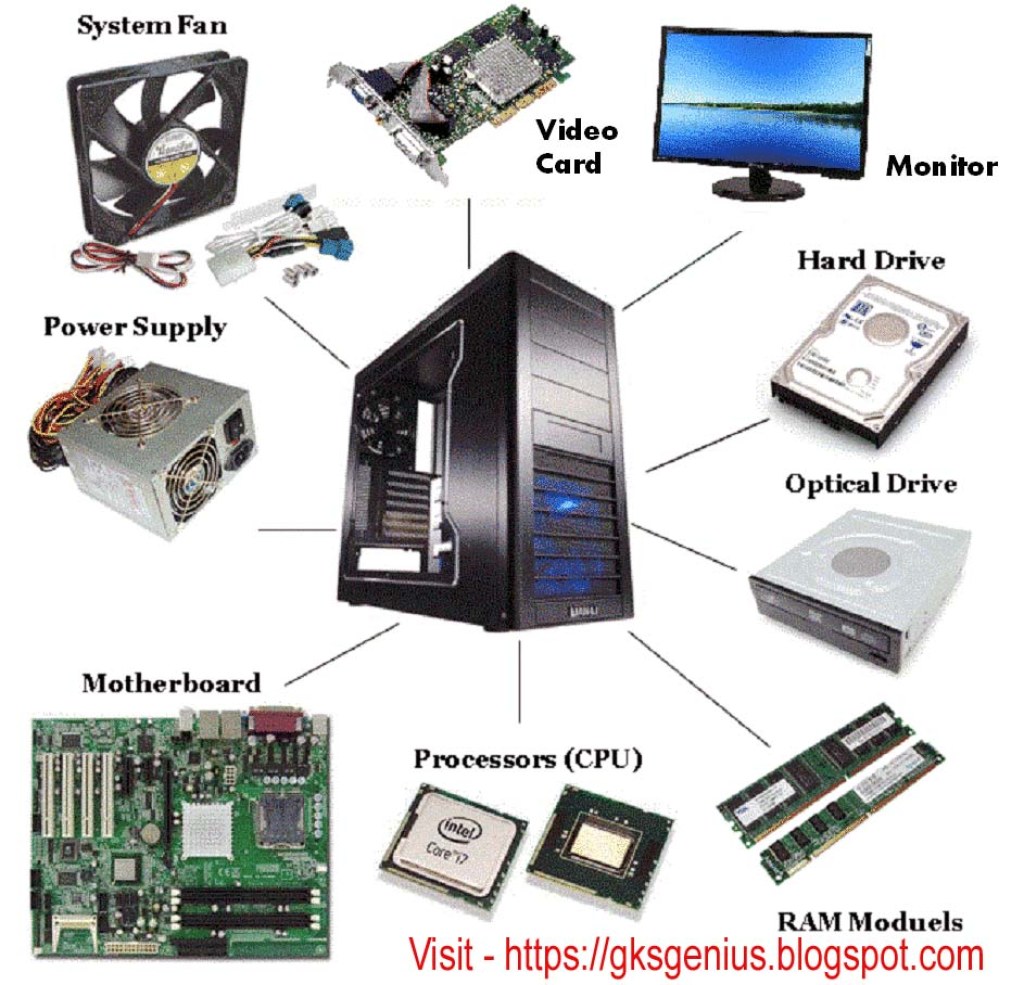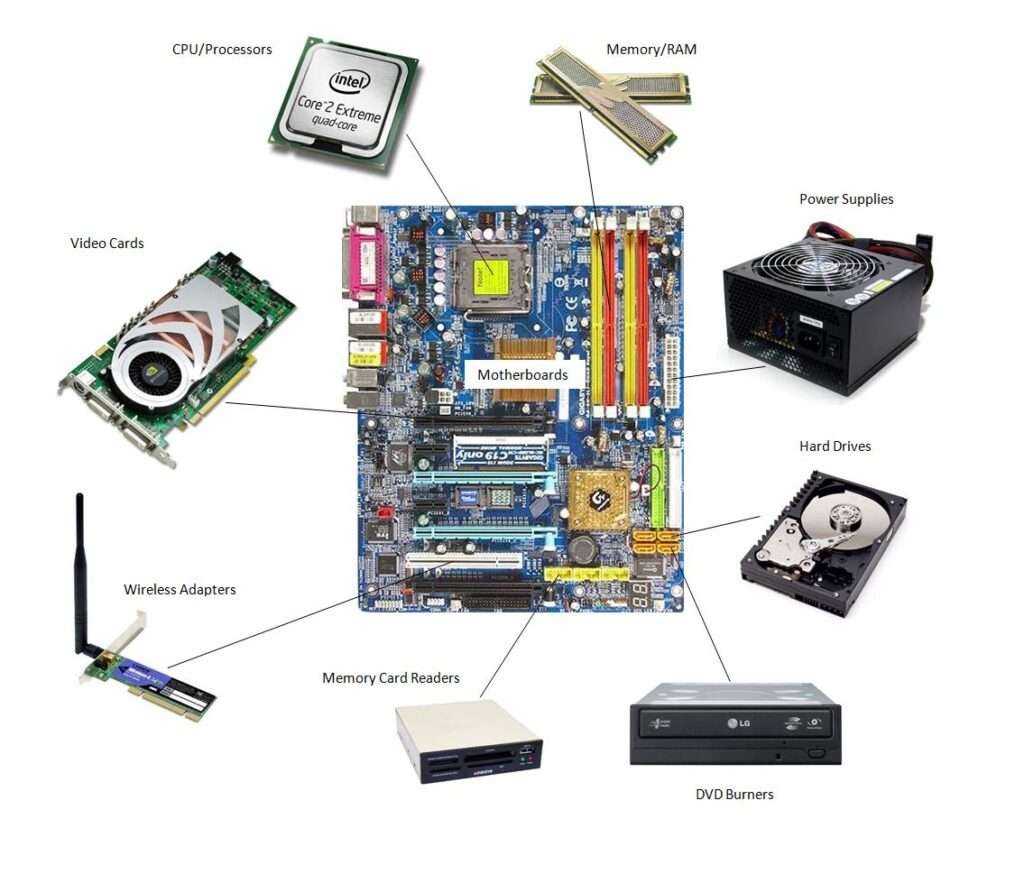Unveiling The Mystery: What Is Computer Hardware Kya Hai? Discover Now And Take Action!
Computer Hardware Kya Hai: A Comprehensive Guide to Understanding the Basics
Greetings, Readers! Today, we embark on a journey to explore the world of computer hardware. In this article, we will delve into the depths of what computer hardware is all about, its significance, and how it functions. So, fasten your seatbelts and get ready to unravel the mysteries of the technology that powers our digital lives.
Introduction
3 Picture Gallery: Unveiling The Mystery: What Is Computer Hardware Kya Hai? Discover Now And Take Action!



In simple terms, computer hardware refers to the physical components that make up a computer system. These components include the central processing unit (CPU), memory modules, storage devices, input/output devices, and more. Each of these hardware elements plays a crucial role in the overall functioning of a computer.
Computer hardware is the backbone of any computing device, be it a desktop computer, laptop, tablet, or smartphone. Without it, your device would simply be an empty shell incapable of performing any tasks.

Image Source: blogspot.com
Now, let’s dive deeper into the world of computer hardware and explore its various components and functionalities.
What is Computer Hardware?
Computer hardware encompasses all the physical components of a computer system. These components are tangible and can be seen and touched. They are responsible for executing instructions and processing data to perform various tasks. Some of the key hardware components include:
Central Processing Unit (CPU): The brain of the computer, responsible for executing instructions and performing calculations.
Memory Modules: The temporary storage area where data and instructions are stored for quick access by the CPU.
Storage Devices: Devices used for permanent storage of data, such as hard disk drives (HDDs) and solid-state drives (SSDs).
Input Devices: Devices that allow users to input data into the computer, such as keyboards, mice, and scanners.
Output Devices: Devices that display or present processed data to the user, such as monitors, printers, and speakers.
Motherboard: The main circuit board that connects and allows communication between all the hardware components.
Graphics Processing Unit (GPU): A specialized processor responsible for rendering graphics and images.

Image Source: blogspot.com
These are just a few examples of the numerous hardware components that make up a computer system. Each component has its own role and function, contributing to the overall performance of the device.
Who Uses Computer Hardware?
Computer hardware is used by a wide range of individuals and organizations. From students and professionals to businesses and government agencies, computer hardware is an integral part of daily operations.

Image Source: aiyoit.com
Students rely on computer hardware for research, assignments, and online learning. Professionals utilize hardware components to carry out their work, whether it’s designing graphics, programming software, or analyzing data. Businesses rely on computer hardware for various tasks, such as managing inventory, processing transactions, and communicating with customers.
In essence, anyone who utilizes a computer system, regardless of their field or profession, interacts with computer hardware on a regular basis.
When Was Computer Hardware Invented?
The history of computer hardware dates back to the mid-20th century. The invention of the transistor in the late 1940s paved the way for the development of electronic computers. The first general-purpose computer, known as the Electronic Numerical Integrator and Computer (ENIAC), was built in 1946.
Since then, computer hardware has undergone significant advancements. The introduction of integrated circuits in the 1960s revolutionized the industry, leading to the development of smaller and faster computers. Over the years, computer hardware has continued to evolve, with advancements in microprocessors, storage technologies, and connectivity.
Where is Computer Hardware Used?
Computer hardware is used in various settings and industries. It is not limited to personal computers but also extends to other devices like smartphones, tablets, gaming consoles, and embedded systems.
Some common areas where computer hardware is used include:
Education: Computers are widely used in classrooms and educational institutions to enhance learning and provide access to information.
Business: Hardware components are essential for effective communication, data management, and productivity in the corporate world.
Healthcare: Medical professionals rely on computer hardware for patient records, diagnostics, and medical imaging.
Entertainment: Gaming consoles, home theaters, and virtual reality systems all rely on computer hardware to deliver immersive experiences.
Research: Scientists and researchers utilize computer hardware for data analysis, simulations, and modeling.
The applications of computer hardware are vast and continue to expand as technology advances.
Why is Computer Hardware Important?
Computer hardware is of utmost importance as it forms the foundation of modern computing. It enables the execution of complex tasks, facilitates communication, and empowers users with the ability to process and store vast amounts of information.
The significance of computer hardware can be summarized as follows:
Performance: High-quality hardware components contribute to faster processing speeds and better overall performance.
Productivity: Reliable hardware allows users to work efficiently and accomplish tasks within shorter timeframes.
Connectivity: Hardware components enable communication between devices, facilitating seamless data transfer and sharing.
Storage: Hardware devices provide ample storage space for data, ensuring important information is preserved and easily accessible.
Flexibility: Upgradable hardware components allow users to adapt their computer systems to their evolving needs and requirements.
Computer hardware is the driving force behind technological advancements and innovation. Without it, the digital landscape as we know it today would not exist.
How Does Computer Hardware Work?
Computer hardware works through a combination of electrical signals, binary code, and logical operations. When a user gives an input or initiates a task, the hardware components work together to execute the required instructions.
The process can be summarized as follows:
The user provides input through input devices such as a keyboard or mouse.
The input is converted into electrical signals and sent to the CPU.
The CPU executes the instructions, which involve logical operations and processing of data.
The CPU retrieves data and instructions from memory to perform calculations.
The processed data is then sent to output devices, such as a monitor or printer, for display or further action.
The storage devices store both temporary and permanent data required for the execution of tasks.
The motherboard acts as a communication hub, facilitating the interaction between different hardware components.
This continuous cycle of input, processing, and output enables the computer system to perform various functions and tasks.
Advantages and Disadvantages of Computer Hardware
Like any technology, computer hardware has its advantages and disadvantages. Let’s take a closer look at both:
Advantages
1. Increased Efficiency: Computer hardware enhances productivity and efficiency by automating tasks and providing faster processing speeds.
2. Improved Communication: Hardware components enable users to communicate and share information easily, fostering collaboration and connectivity.
3. Storage Capacity: Hardware devices offer vast storage capacities, allowing users to store and access large amounts of data.
4. Scalability: Most hardware components are modular and can be upgraded or replaced, providing flexibility and scalability.
5. Enhanced Entertainment: Powerful hardware enables immersive gaming experiences, high-quality multimedia playback, and virtual reality applications.
Disadvantages
1. Cost: High-quality computer hardware can be expensive, especially when considering the need for regular upgrades.
2. Complexity: Understanding and troubleshooting hardware-related issues require technical knowledge and expertise.
3. Maintenance: Hardware components require regular maintenance and updates to ensure optimal performance and longevity.
4. Environmental Impact: The production and disposal of computer hardware contribute to electronic waste and environmental concerns.
5. Compatibility Limitations: Certain hardware components may not be compatible with specific software or operating systems, limiting functionality.
It’s important to weigh these pros and cons when considering computer hardware for your needs.
Frequently Asked Questions (FAQ)
1. Can computer hardware be upgraded?
Yes, computer hardware can be upgraded. Certain components, such as memory modules and storage devices, can be easily replaced or expanded to enhance a computer’s performance.
2. Is computer hardware the same as software?
No, computer hardware and software are different. Hardware refers to the physical components of a computer, while software refers to the programs and applications that run on the hardware.
3. How often should computer hardware be replaced?
The lifespan of computer hardware varies depending on usage and advancements in technology. However, on average, hardware components may need to be replaced every 3-5 years to keep up with evolving software requirements and performance demands.
4. Can computer hardware fail?
Yes, computer hardware can fail due to various reasons such as overheating, power surges, manufacturing defects, or physical damage. Regular maintenance and proper usage can help mitigate the risk of hardware failure.
5. Where can I purchase computer hardware?
Computer hardware can be purchased from various sources, including online retailers, electronics stores, and specialized computer hardware vendors. It’s important to ensure the authenticity and quality of the products when making purchases.
Conclusion
After delving into the intricate world of computer hardware, it is evident that these physical components are the building blocks of modern computing. Their significance, functionality, and impact on our lives cannot be overstated.
Whether you’re a student, professional, or technology enthusiast, understanding computer hardware is essential for navigating the digital landscape with confidence. So, embrace the power of hardware, explore its possibilities, and witness firsthand the wonders it can create.
Final Remarks
In conclusion, computer hardware is an integral part of our technological ecosystem. It empowers us to accomplish tasks efficiently, communicate seamlessly, and explore limitless possibilities. However, it’s essential to use and dispose of hardware responsibly, considering the environmental impact.
Now that you have a comprehensive understanding of computer hardware, we encourage you to explore further, stay updated with the latest advancements, and continue harnessing the power of technology.
This post topic: Computer Hardware

